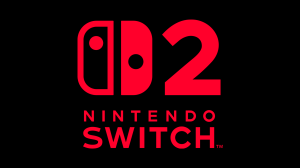In the year 2000, Marvel made its most important change in the 21st century. Former editor in chief Bob Harras left the publisher and he was replaced by Joe Quesada. The writer/artist/editor wanted to “fix” Marvel after the problems of the ’90s and brought in all kinds of new talent, as well as bringing back some old school Marvel greats. Nearly everything most fans love about Marvel in the last 25 years had its origin with Quesada, including the event cycle. While we mostly identify 2004’s Secret War as the beginning of the Marvel event cycle, there is actually another event that came before it, one that played on reader nostalgia and tried to un-do a major superhero story trope.
Videos by ComicBook.com
Back in the early ’00s, we got a lot of “The End” books, starting with the fantastic Hulk: The End. The next one we got was in 2003, and played off the nostalgia for the ’90s classic Infinity Gauntlet: Marvel: The End. This six issue series was written and drawn by Marvel legend Jim Starlin, and starred Thanos in a battle against Akhnetan, an all-powerful being out to destroy everything. Marvel: The End isn’t usually counted among Marvel’s most beloved event comics, but like the event books that would come later, it tried to make a major change to the Marvel Universe, one that wouldn’t stick, but was highly ambitious.
Marvel: The End Tried to End Resurrections in the Marvel Universe

As far as it goes, the story of Marvel: The End isn’t super important, or even all that good. Thanos and the heroes end up fighting Ahkenatan, then Thanos gains ultimate power, destroying and recreating the universe. This is the interesting part. Over a couple pages at the end of Marvel: The End #6, Thanos explains that he’s removed resurrection from the Marvel Universe. That now, death was going to matter because the revolving door of the afterlife was closed in this new iteration of the universe.
This was a bold move. Quesada wanted to make his Marvel Universe different from what came before. We talk a lot nowadays about how death in comics doesn’t really matter, but that conversation was around back then too. Death became just another marketing tool in comics and the new editor in chief wanted to change that. Marvel was entering a new era in the ’00s, and Quesada and Marvel editorial wanted it to actually be different.
Of course, this didn’t last. Marvel: The End wasn’t a massive seller, and it wasn’t really talked about all that much in the comic press. Quesada gave a few interviews about the ending in a few different places, but it wouldn’t be all that long before creators started to resurrect characters. It was definitely a bold move, but let’s be real — it was never going to last. Superhero comics at the Big Two are built on two things: characters we recognize and shock factor. Taking away resurrection from superhero comics was a big move, but it robbed comics of one of its most tried and true tropes. Marvel: The End is an interesting piece of Marvel apocrypha, made all the more intriguing when you think about what the ending was supposed to mean for Marvel.
Did you read Marvel: The End? Leave a comment in the comment section below and join the conversation on the ComicBook Forums!








